MENUMENU
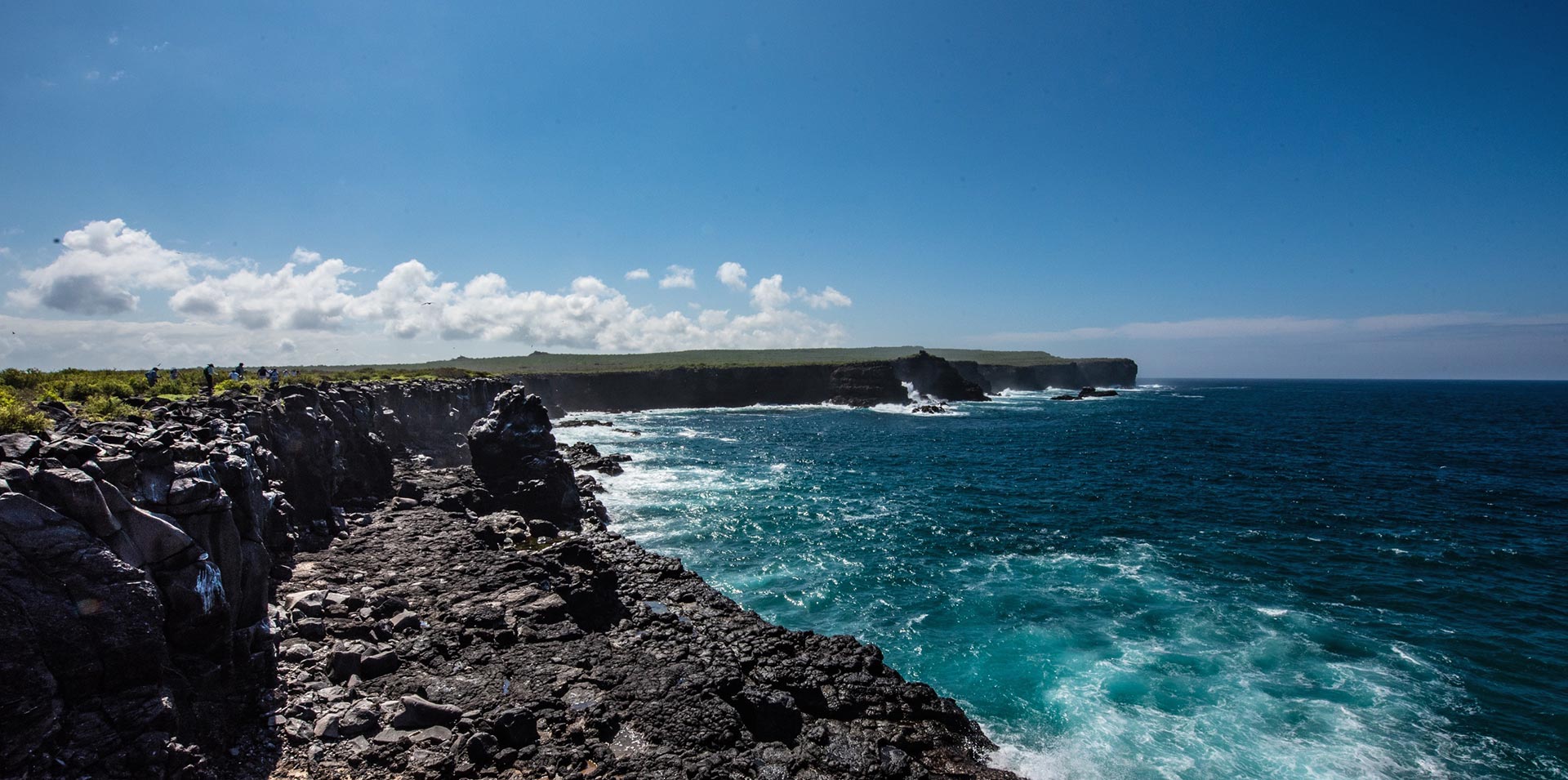
Reading time: 10 mins
Rules aren’t precisely what we expect to come across as we start our journey to a new exotic place. But rules are exactly what keeps the Galapagos Islands thriving as a fragile ecosystem and wildlife sanctuary. Most of the plant and animal species within the Galapagos archipelago are sensitive to change. Therefore, strict rules must be implemented and reinforced to ensure their survival as a species and their prosperity.
Don’t worry, though! The regulations are very simple to follow, and it’s evident why they have been put in place. Remember that as a visitor to the Enchanted Islands, you have a responsibility to protect and become an advocate for the flora and fauna that live there. The Galapagos Islands have been bestowed the honor of being a World Heritage Site as the islands hold the unique position of being a wildlife sanctuary, conservation site, and tourist attraction. As a result, every visitor to the islands plays a vital role in protecting and conserving the incredible wildlife and flora that they find around them. This means following a few simple rules.
Are you interested in exploring our tour packages in the Galapagos Islands?
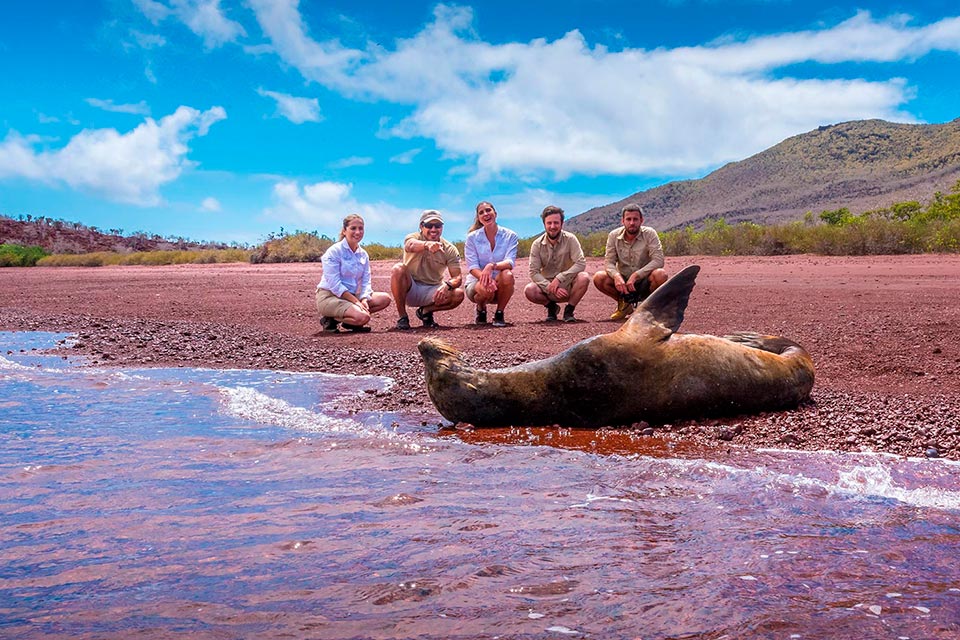
Tourists looking at a sea lion
We know the islands are stunning, and given that visitors can only access a small portion of the islands, we understand that the use of a drone is tempting. However, their use is prohibited. Can you imagine the reaction of the many seabirds that reside in the islands? They would undoubtedly cause some disturbance or confusion, and the fragile ecosystem would likely react negatively.
As well as drones, it is also forbidden to use flash on any cameras. We all know that feeling when the flash goes off in our eyes during a nocturnal photo shoot. Just imagine how it would feel for a sleepy land iguana or timid Galapagos penguin! As they have never encountered these things before, it might cause them to sway from their habits, like leaving their nests or causing their positive and curious opinion of humans to change.
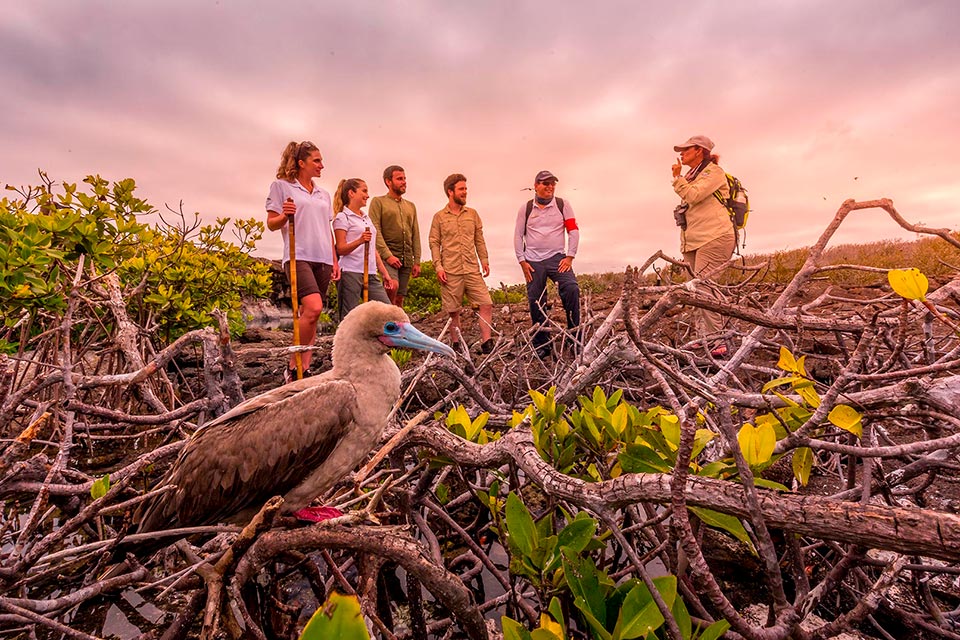
Group of tourists and a blue-footed booby in the Galapagos Islands
This rule has been put in place for the safety of both the visitors and the wildlife’s wellbeing. Firstly, it’s important to remember that the archipelago’s islands are spread over the open ocean. Most day tours take passengers on a ride lasting at least thirty minutes before reaching their destination. Most tours also include food, hiking on unfamiliar grounds, and snorkeling. You’d want an authorized tour operator to know exactly what they’re doing, especially in the unlikely event of an emergency!
Also, the Galapagos National Park has a strict schedule that controls where tours are going and when. This must be upheld to ensure that wildlife is not being disturbed by too many visitors to their islands.
Remember that an authorized tour operator means a certified National Park Guide. These guides have learned everything you need to know about Galapagos and are with you to answer all your questions. Only a certified tour guide and authorized tour vessel can provide you with a real Galapagos adventure.
Want to check out our protocols and Ecuador’s requirements for international travelers?
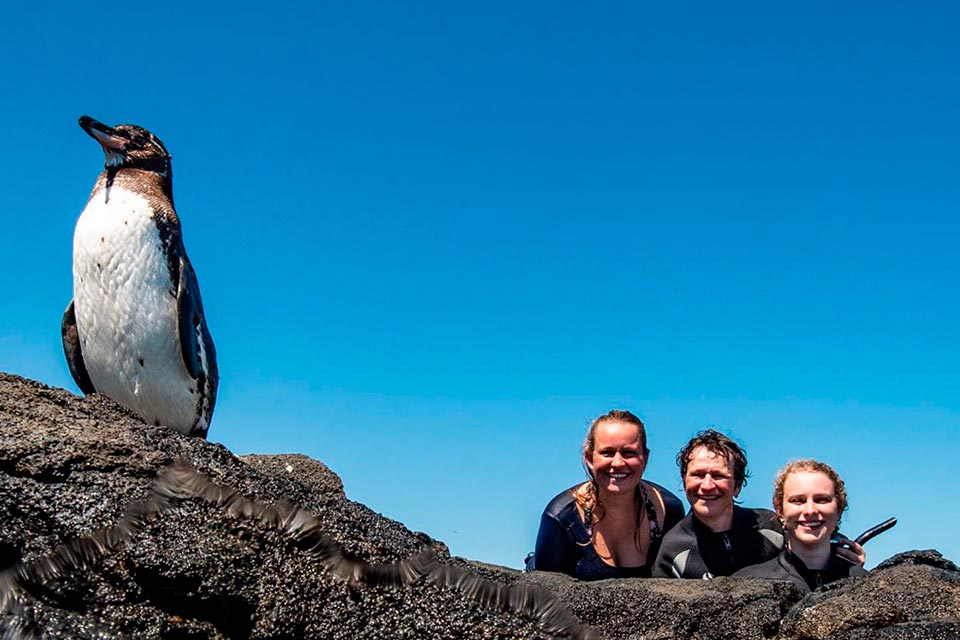
Tourists interacting with Galapagos Penguin
The Galapagos ecosystem was untouched for millions of years. There were next to no predators, little erosion, and each species had access to plenty of food. This makes it incredibly susceptible to the slightest change in the ecosystem, whether it’s within the ocean waters or on the islands themselves. Understandably, the introduction of foreign elements is strictly forbidden!
Although many introduced species such as pigs and goats have been successfully removed from the islands, there are still over 1,000 introduced and invasive species, according to the Charles Darwin Foundation & Research Center. These reside in both the marine reserve and on the islands, competing for food, preying on vulnerable endemic species, and causing erosion. For example, the invasive parasitic fly, Philornis downsi, has negatively affected several Galapagos bird species, including the critically endangered Mangrove Finch. They lay their eggs along with the birds’ own, and once the larvae hatch, they feed on the blood of hatchlings, often causing all the chicks within the nest to die.
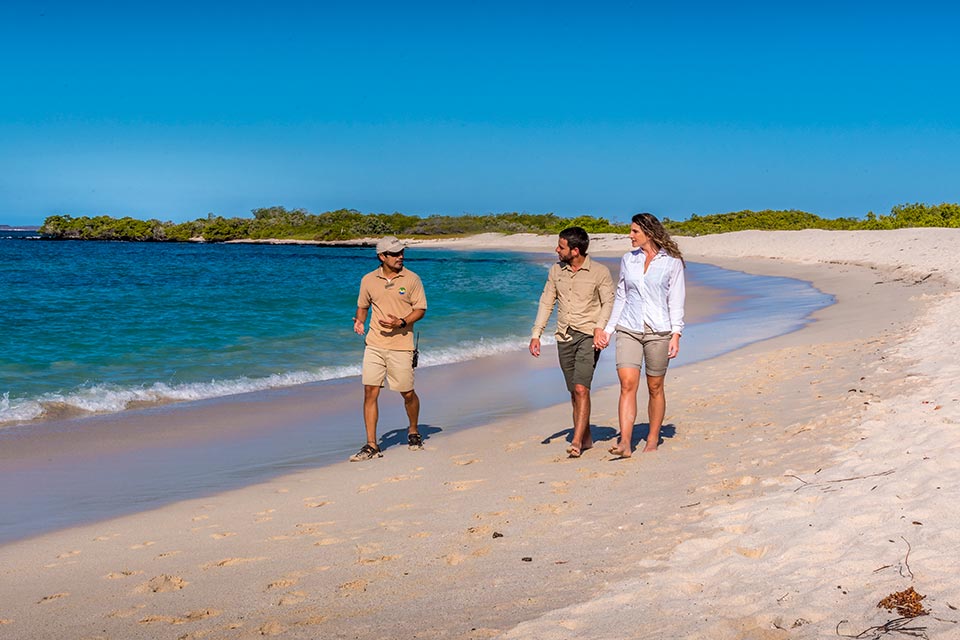
Couple of visitors with naturalist guide in Galapagos Islands
As mentioned before, only a certified National Park guide can answer all of your questions. They know everything ranging from the formation of the islands to detailed questions about species lifecycles and every intricacy in between. If you’re wondering about the best time to visit Galapagos, a knowledgeable guide can provide valuable insights and recommendations on the ideal seasons for specific wildlife encounters and unique experiences.
They also adhere to every rule within the National Park and have been trained in first aid. A fantastic guide will make sure that your Galapagos adventure will be one of the best experiences of your life and will ensure that you won’t only take selfies with the animals but that you’ll get to know these mysterious islands on an intimate level.
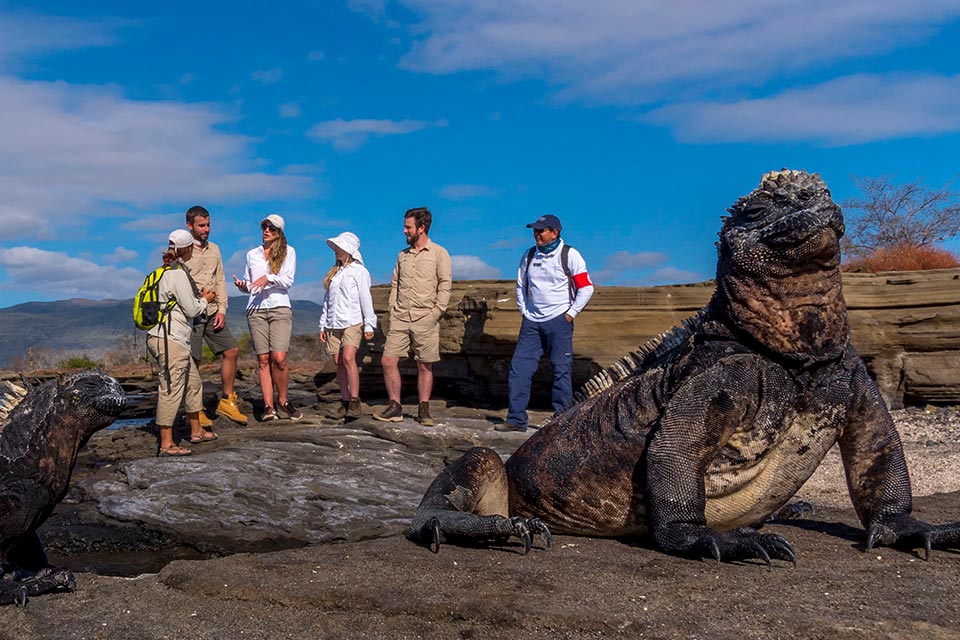
Wildlife watching tourism
There is nothing worse than feeding wildlife, and it’s even worse when those animals are used to a fragile ecosystem. Feeding animals any kind of food that they are not accustomed to means that it could severely affect that animal and have detrimental effects on its digestive system in the future. Also, if we feed the animals, we could change their habits, thus affecting the ecosystem. If you ‘just give a tidbit to a hungry-looking penguin,’ it could cause the downfall of many endemic species. Obviously, it is absolutely forbidden to feed them!
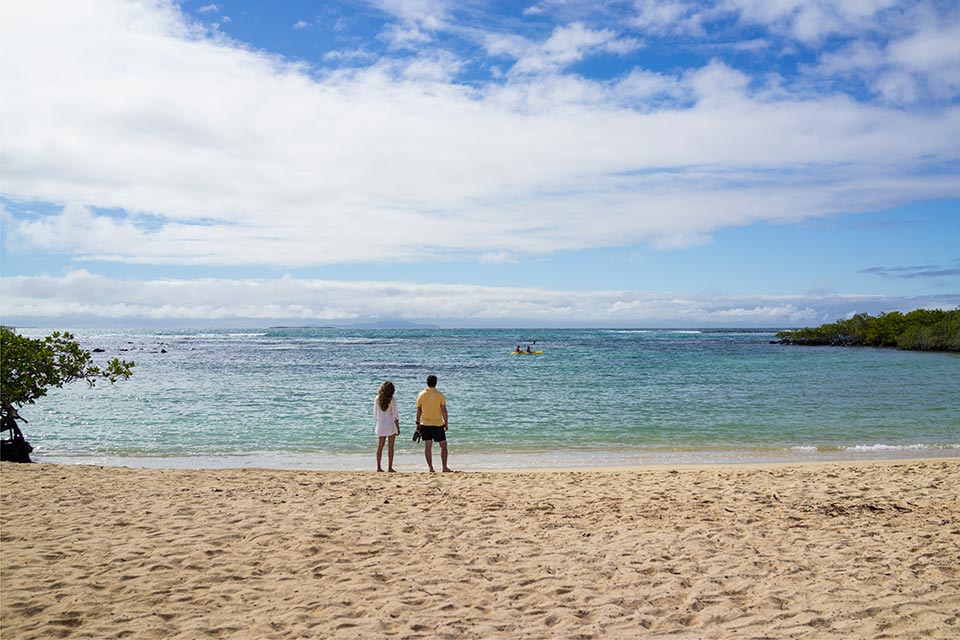
Galapagos Islands landscape
We have all seen the effects of a plastic bag on marine wildlife, so most people are familiar with the reasoning behind this rule. It is absolutely imperative that garbage is recycled in the correct bins and that not even a candy wrapper is dropped on the ground. We want visitors to be able to continue to enjoy the Galapagos and the archipelago’s unique species for many years to come.
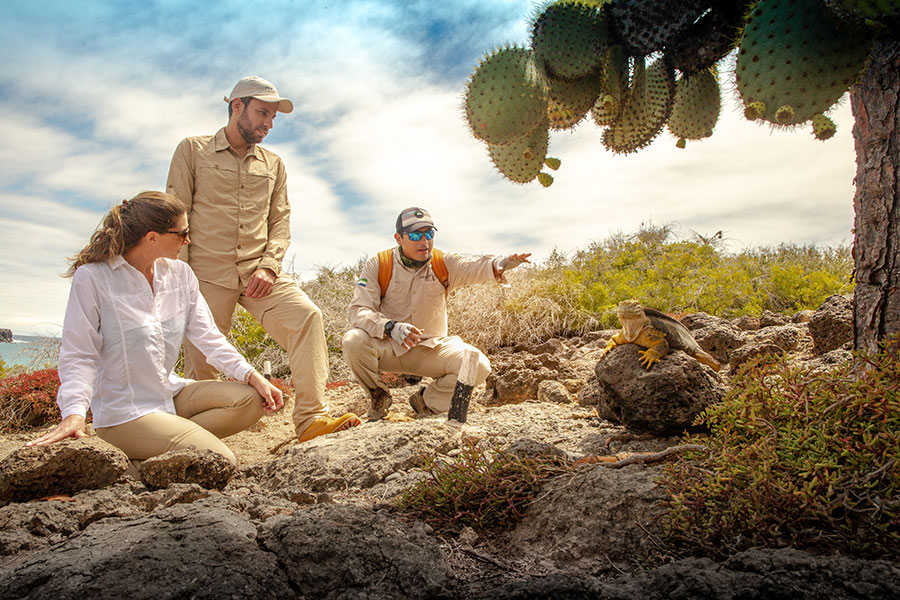
Naturalist guide and tourists observing a Galapagos iguana
Just like in any destination, there will always be those who try to take advantage of the industry- both the visitors and the residents. If tourists buy souvenirs that could potentially harm the Galapagos’ delicate ecosystems, the makers will continue to supply them. Therefore, remember to be a conscientious visitor and choose to buy responsibly as well as reporting any suspicious objects/souvenirs.
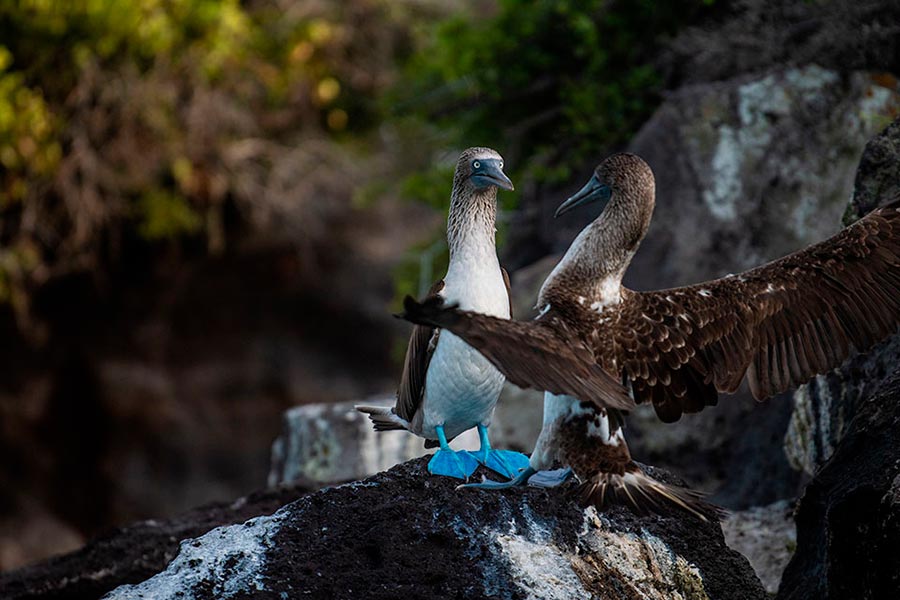
Two blue footed booby
As you can imagine, there are strict fishing rules to protect the marine reserve within the archipelago. However, as there is a stable population that lives on the islands, it is still permitted to fish on boats that the National Park authorizes. Those who own and manage these boats follow strict rules regarding where, when, and what they are allowed to fish. Any overfishing or fishing for endangered or delicate species could severely harm the underwater ecosystem.
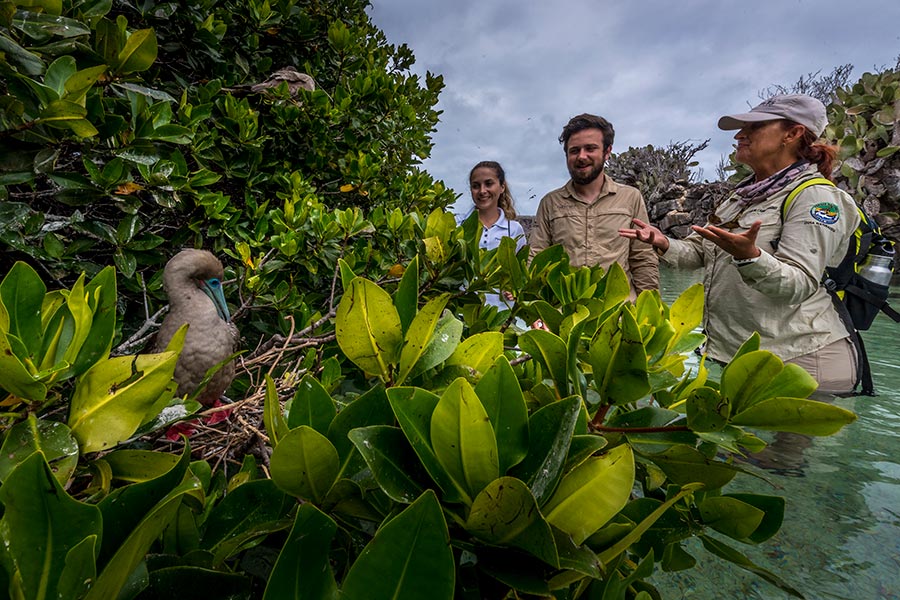
Guide showing the Red-footed Booby
The Galapagos Islands can only survive through careful conservation, and anything removed from its ecosystem, no matter how small, could have severe effects on the national park and marine reserve. Don’t let your small souvenir be the straw that broke the camel’s back, and always get your souvenirs from the many handicraft stores on the islands or on the mainland. What belongs to Galapagos stays in Galapagos!
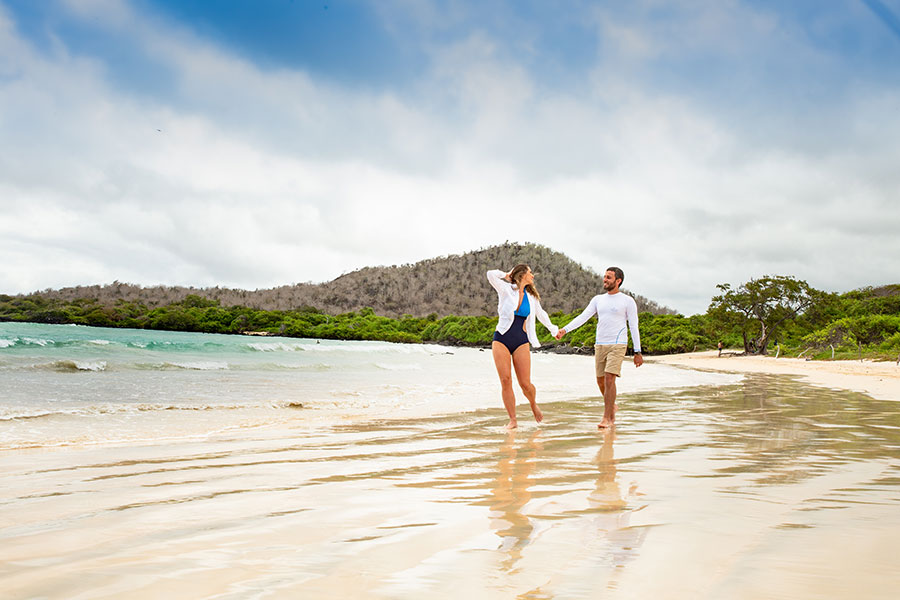
Beaches of the Galapagos Islands
This is one activity that is allowed as long as you follow the rules and request authorization from the Galapagos National Park Directorate. If this is on your bucket list, be sure to thoroughly research the steps you need to take to camp. You will need to select a camping-approved site and request permission to stay there at least 48 hours in advance. And enjoy!
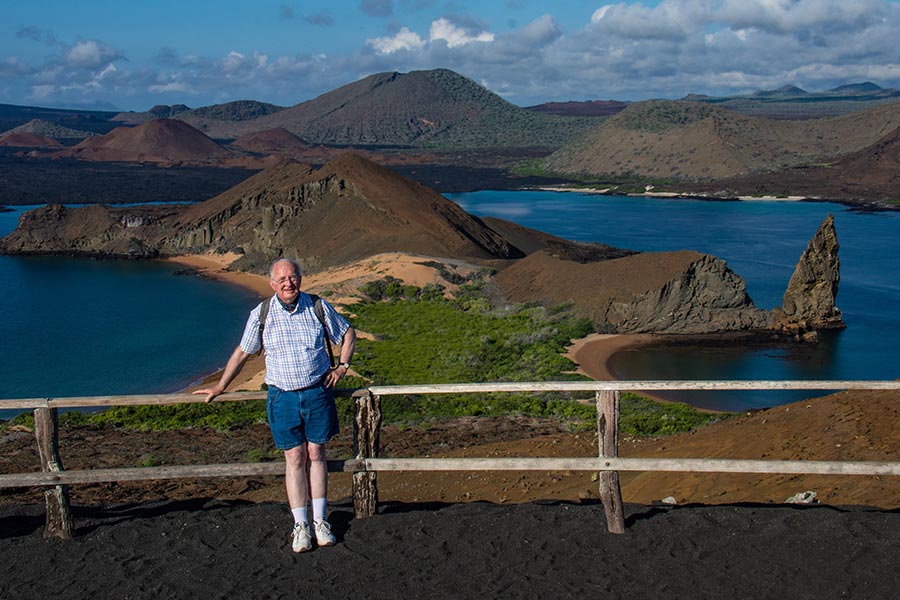
Galapagos Islands landscape
This is one of the reasons why camping is so closely regulated. Smoking and fires can directly affect flora and fauna as well as yourself and others. Remember, you can still drink in the licensed bars and restaurants outside of the National Park.
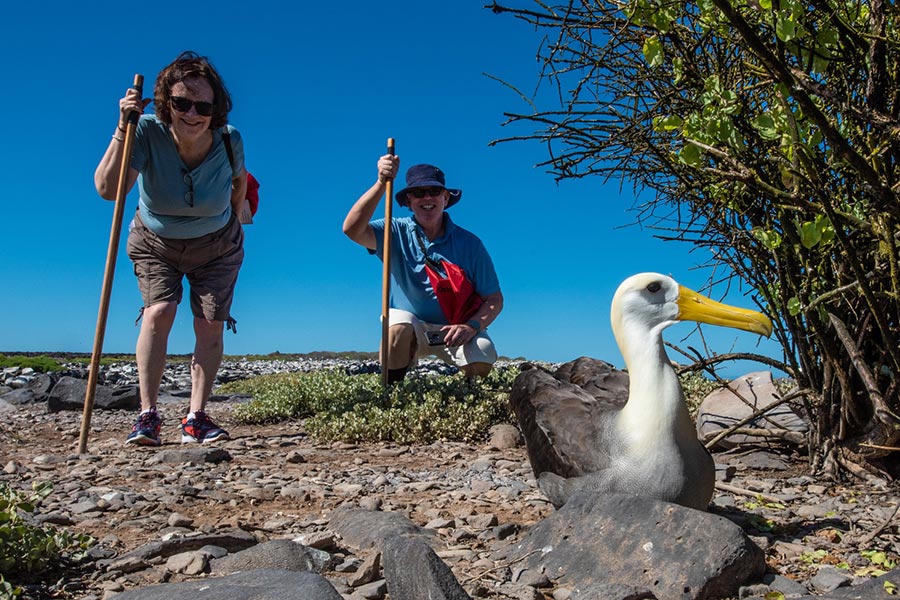
Wildlife sightings along the route
It’s certainly a little bit of an invasion to have a lot of people traipsing through their habitats. And we definitely wouldn’t want people to do that in our own private homes! So it’s vitally important to stay at least 6 feet (2 meters) away from all wildlife, no matter how cute or curious they seem. This will ensure that wildlife will remain curious rather than scared of visitors and safeguard your well-being and theirs. It’s also incredibly important to remain as quiet as possible while encountering wildlife in their own habitats.
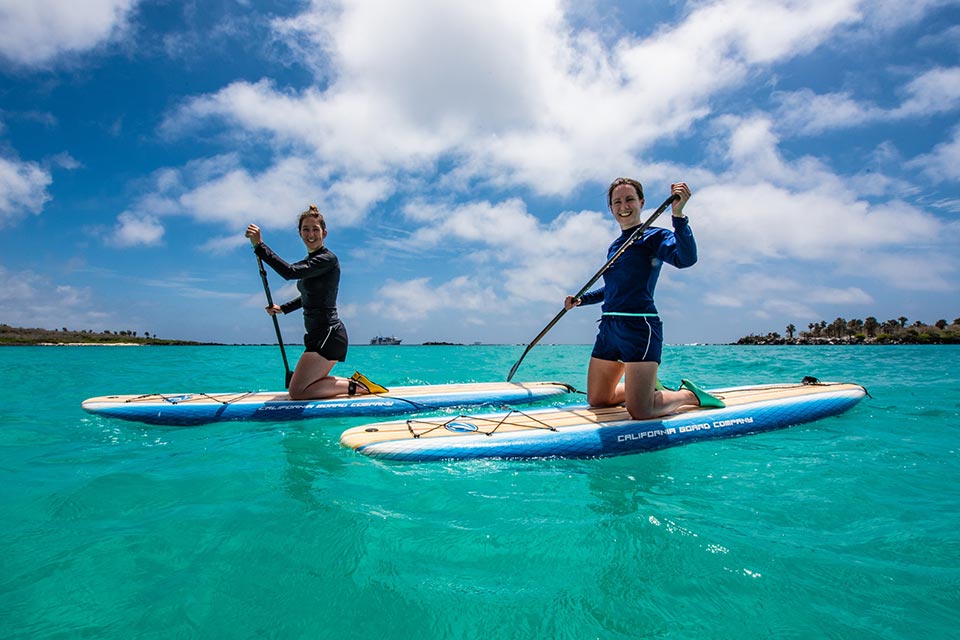
Paddleboarding in Galapagos
For many reasons, such as protecting the marine reserve and ensuring wildlife’ wellbeing, motorized recreational vehicles are an absolute no-go. Even the number and size of all vessels within the Galapagos archipelago have been severely restricted to protect the delicate ecosystem. Why not enjoy snorkeling or swimming with wildlife to observe the strange and wonderful world under the waves?
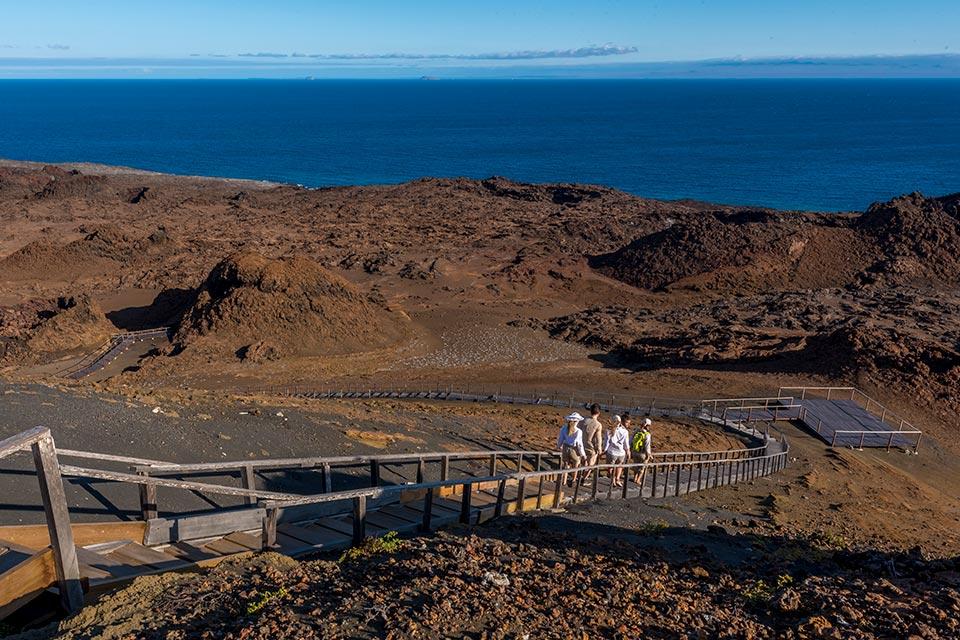
Bartolome Island landscape
Although very few changes have been made to the uninhabited islands, very specific trails have been marked out for everyone’s safety. One of the strictest rules in the Galapagos National Park is that a certified guide must accompany each tour group. A guide is unable to protect or even give you information if visitors decide to amble all over the islands. Designated paths prevent further erosion and human impact on the islands, too.
We have a perfect deal waiting for you!
The Galapagos Islands are a beautiful, unexpected gem that has been preserved and conserved for decades. This can’t continue to be done if strict rules aren’t put in place to protect both the visitors and the wildlife. The delicate ecosystems must be protected, and that can only be done if each visitor follows these regulations very carefully. Each visitor’s cooperation will ensure that future generations will also be able to appreciate this treasure chest of stunning endemic flora and fauna.